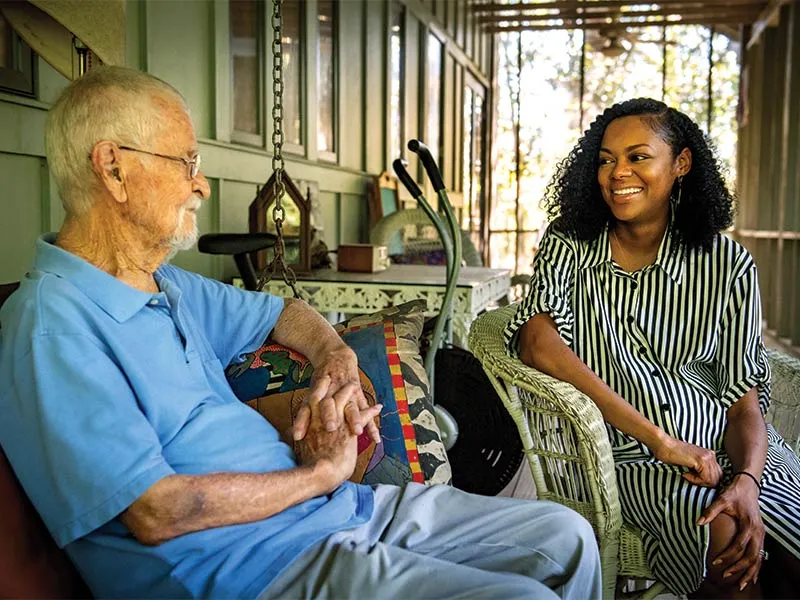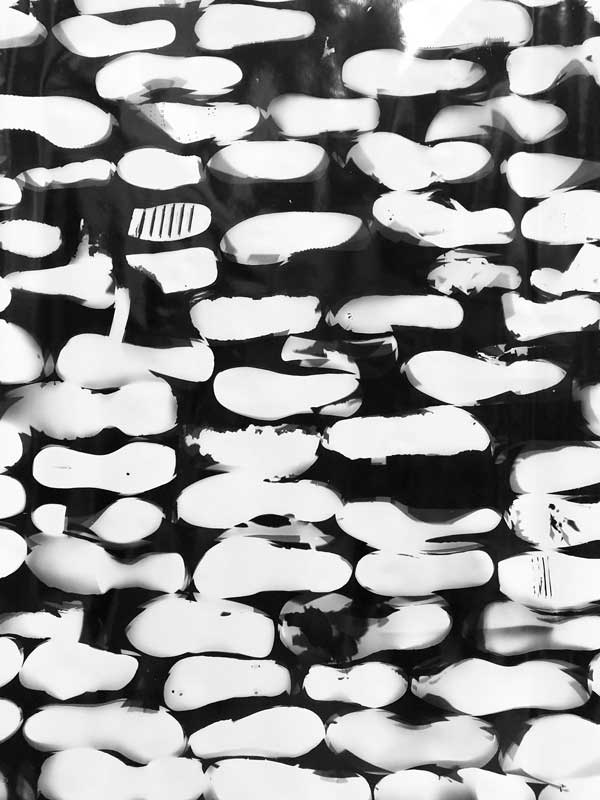
About a thirty-minute drive from Tulane’s Uptown campus, across the Mississippi River and down Patterson Road, A Studio in the Woods sits among seven and a half acres of bottomland hardwood forest. Lucianne and Joe Carmichael founded the organization in 2001 as a residency center, and in 2004 the couple donated the land and buildings to Tulane University to ensure the preservation of the landscape. Since A Studio in the Woods’ founding, more than 130 artists, writers, and scholars have held residencies on the property, researching and creating work that thoughtfully engages with the environment.
“The Carmichaels intended for A Studio in the Woods to support creativity and scholarship across disciplines. They began by inviting artists but were always open to more scholars taking advantage of the time and space the place offers,” Ama Rogan, managing director of A Studio in the Woods, explains. The Studio is part of Tulane University’s ByWater Institute, which engages in applied, cross-disciplinary research and outreach on coastal resilience and the urban environment, primarily through their three physical locations: the university’s Uptown campus, the Tulane River and Coastal Center, and A Studio in the Woods. Throughout the year, the Studio offers artists, writers, and scholars residencies that can include an honorarium, supply budget, meals, and a living and studio space, as well as staff support to help make invaluable connections to people and resources.
In fall 2014, Rogan and the ByWater Institute came together to form a scholarly retreat for Tulane faculty and graduate students at the Studio. Amy Lesen, a research associate professor with the ByWater Institute believes the organization’s unique approach creates a fertile environment for expanding one’s research and practice: “A Studio in the Woods is a fascinating space because it is a place of environmental stewardship and a biological research station in addition to an artist and scholarly retreat center. Each of these pieces influence the feel there and the fluid approach to inquiry.” During their scholarly retreats, faculty and graduate students selected through an application process spend time researching, writing papers, preparing for conferences, or working on their dissertations for one or two weeks at a time.

Adam Crosson, assistant professor of sculpture in the Newcomb Art Department, participated in one of the scholarly retreats in December 2018. “When I arrived at A Studio in the Woods, it was an explosion in making,” explained Crosson. During his weeklong stay, Crosson completed a new video and began multiple new drawings and sculptures, which formed the majority of artwork in exhibitions this spring at Tulane’s Carroll Gallery and Antenna Gallery in New Orleans. Both energizing and inspiring, Crosson’s stay overlapped with that of an artist who was also in residence. “While only about eight days, the retreat allowed me to disconnect from teaching and form a fruitful place of production. It was also really inspiring for me to be in close proximity to the water and present with another artist.”
Time away from one’s normal routine is an important aspect of the retreat for all residents. And for some, the experience of stepping away can create space for new ideas and approaches. Danica Brown, a Ph.D. candidate in the School of Liberal Arts’ City, Culture, and Community doctoral program, participated in a two-week long residency in September 2018 at A Studio in the Woods. Brown’s research centers on college access for historically underrepresented students and looks specifically at the college culture of the charter school system in New Orleans. “Having a peaceful place and uninterrupted time to work on my dissertation was incredibly helpful for the development of my ideas. Sitting and speaking with Joe Carmichael on the porch each day also helped me gain a greater understanding of the history of education in the city of New Orleans, since he and Lucianne have been deeply invested in public education,” shared Brown. “Being in nature, having that space and time, really inspired my academic creativity.”
“The Carmichaels intended for A Studio in the Woods to support creativity and scholarship across disciplines.”
Ama Rogan
The serene site, paired with a break from one’s daily routine, creates an important environment that leads to a greater ability to focus, Rogan explains, echoing Brown’s sentiments. “A Studio in the Woods offers a chance to step away and unplug, allowing the opportunity to slow down, to connect to oneself, and be more productive creatively—the space truly allows for inspiration to flow.” At times, this productivity might take shape as a conversation as it did for Brown, or the ability to focus completely on a new body of work, as it did for Crosson. For other scholars, the retreat has led to a breakthrough in writer’s block to complete a paper or open a new line of inquiry.
For Chris Rodning, an archaeology professor in the Department of Anthropology, retreats at the Studio have allowed him to “think in new ways” and begin exploring new themes of interest for further anthropological inquiry and investigation. During Rodning’s scholarly retreats in fall 2017 and spring 2019, he began thinking more deeply about the archaeology of water, and Native American settlement of watery landscapes in the Lower Mississippi Valley and coastal Louisiana. Rodning worked on multiple papers at A Studio in the Woods, one of which was published in April 2019 in the Proceedings of the National Academy of Sciences. Today, he continues to study relationships between people and place as reflected in the archaeology of earthen mounds and other forms of architecture in Native American cultural landscapes of the southern Appalachians and the Gulf South—a topic he began studying during his earliest retreat that continues to evolve into new ideas.

